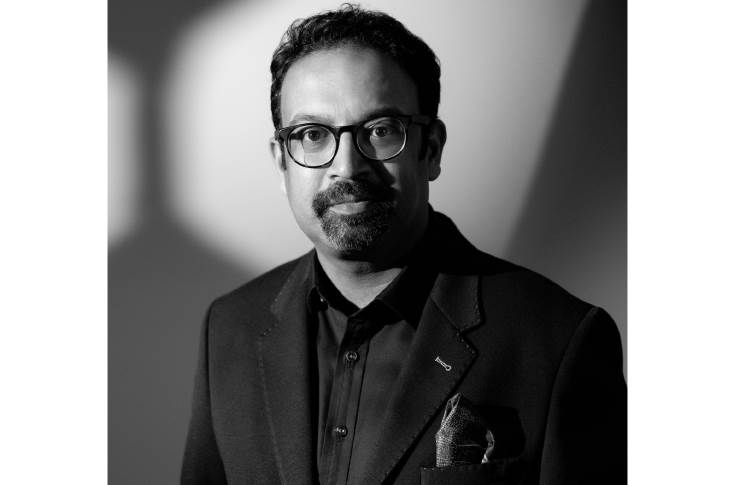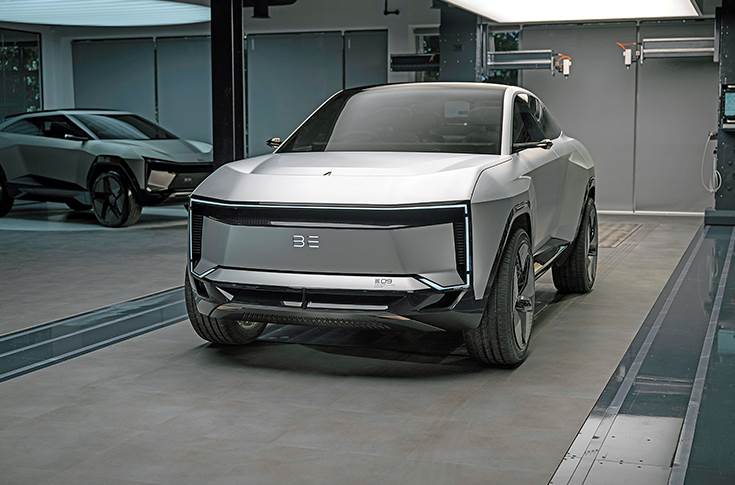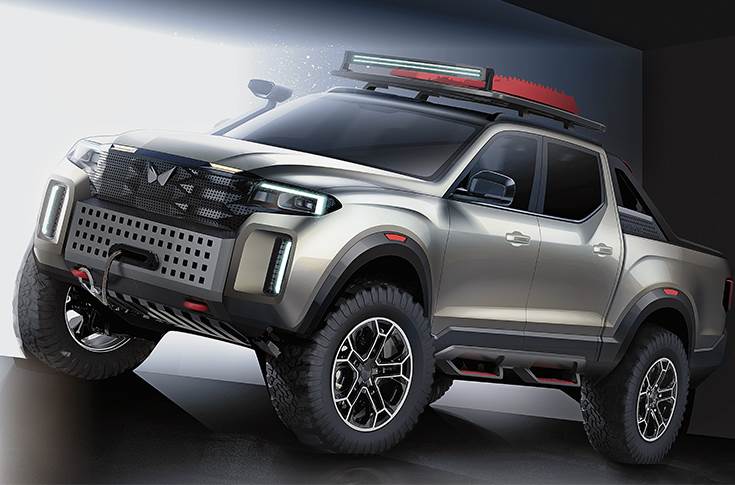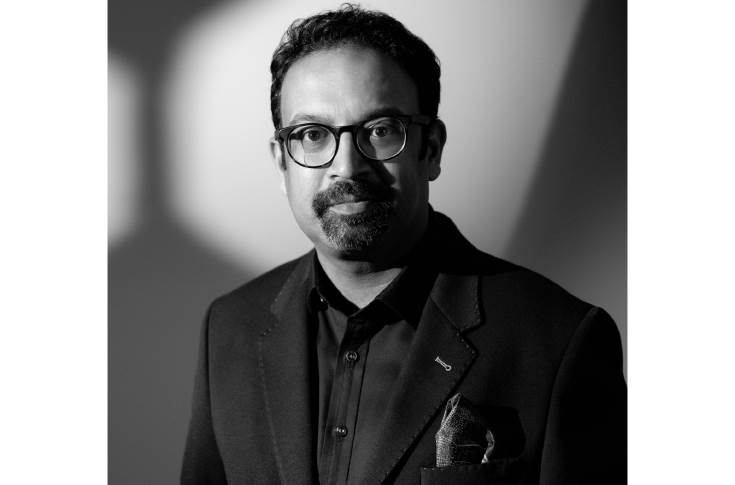Pratap Bose, Chief Design and Creative Officer, Auto and Farm Sector, Mahindra and Mahindra Limited (M&M), has a lot on his plate after he joined the company on June 24, 2021. In his role, Bose is leading the MADE (Mahindra Advanced Design Europe) and MIDS (Mahindra India Design Studio) design centres, in addition to projects developed for M&M at Pininfarina Design and Automobili Pininfarina, in Turin, Italy. Bose oversees design of all vehicle segments, ranging from SUVs, including M&M’s upcoming Born Electric Vehicles (BEVs), LCV products, Mahindra Last Mile Mobility Limited (MLMML) passenger- and cargo carriers, large CVs, tractors and farm machines. He shared key highlights of his journey at M&M so far, and shared the company’s vision with respect to product design for domestic and global markets.
Bose begins by saying, “I joined Mahindra and Mahindra (M&M) in June 2021 and it has been an incredible journey over the last two years. A lot has happened. We have launched several products during this time, and we have also begun designing the next generation of both ICE and EV products.”
 Pratap Bose, Chief Design and Creative Officer, Auto and Farm Sector, Mahindra and Mahindra Limited (M&M)
Pratap Bose, Chief Design and Creative Officer, Auto and Farm Sector, Mahindra and Mahindra Limited (M&M)
M&M showed some of the EV concepts in August 2022 at MADE in the UK, and in August 2023 in South Africa, the Oja range of tractors was unveiled along with the Global Pik-up concept and the Thar.e vision concept.
“So, around five or six show cars, as well as some production vehicles have been launched in this period. When I joined Mahindra, the XUV700 was launched, and then the Scorpio N was introduced the following year. It has been a great time, I think, to join the company. When one talks about timing, it is probably being at the right place at the right time,” he said.
M&M is at an inflection point in automotive and farm sectors and is making great strides and there’s a strong focus on design with its new range of products that are appealing to a wider audience. “You cannot look at any company in isolation. India itself is at an inflection point. The growth of the country, connectivity, aspiration, et al, therefore, what we are undergoing at M&M, is a reflection of what is happening in India and in the world in general,” Bose points out.
He says the world is opening up, and it’s truly becoming connected and flat. “And I think, therefore, what we’re doing internally only reflects what’s happening outside. And this drive towards electrification, that’s a huge inflection point, for us.”
Shifting consumer preferences
“What we design merely sort of reflects that big change in the society. Today, people are not buying our vehicles to get from point A to B. It is more about social mobility, more than physical mobility. They are moving in life. And we offer them those products to take them there. And that, I think, is actually more important than what we are just doing internally,” he says.
With the profile of automobile buyers changing fast in the last few years, a car designer has to meet those challenges and Bose admits it’s no exception.
“I think for designers, this is not new. Through the history of industrial design, if you look at it sort of 100-odd years of industrial design, it’s always been about being able to foresee what the shifts in society are going to be.” About new buyers, he says that a whole segment of new buyers are women, who work and earn their own money, and then you are also angling for that share of wallet. So, a buyer is not a male, sort of a certain stereotype anymore. Our new buyers include women and, like you said, younger audiences. How do you adapt to that? And we saw that coming. So, for example, for the Thar, a lot of our customers are women, he says.
“Now, did we design a Thar for a woman? I don’t think so. We designed a Thar to be a Thar. And whoever resonates with that philosophy of the product will buy the product.”
On Battery Electric Vehicles, Bose says a similar shift in consumer preferences can be expected. “The same thing is happening in our BEVs. You know, we try to design the best BEVs that we can with the kind of presence, the performance, and technology. And then, I’m sure it will therefore resonate with certain sections of the market out there. And they could be women, they could be men, they could be older, they could be younger. But surely, the common thing will be that what they see as a product and the value we deliver in terms of technology, safety, performance, will resonate with them. We’re not getting so specific that we’re designing only for a particular kind of person. You know, this is really the new age India, in all sorts of respects,” he says.
One size fits all concepts doesn’t work anymore Bose agrees that such an idea doesn’t work anymore. “A lot of people ask, why did you showcase a range of five EVs? And if you see them, they’re actually very different, each of them. They’re across two brands (XUV and BE), first of all under ‘infinite possibilities’ for the entire range. Each one is very specific in terms of who it targets. So, there’s something common, they want electrification, they want a strong product, they want excitement in their drive,” he says.
Bose agrees that such an idea doesn’t work anymore. “A lot of people ask, why did you showcase a range of five EVs? And if you see them, they’re actually very different, each of them. They’re across two brands (XUV and BE), first of all under ‘infinite possibilities’ for the entire range. Each one is very specific in terms of who it targets. So, there’s something common, they want electrification, they want a strong product, they want excitement in their drive,” he says.
And this is where the importance of design comes in, because they’re all built on a single architecture called INGLO. Describing the end products from this, he says, “The BE.05, which is like a fighter jet on wheels, will appeal to some people. On the other hand, you’ve got the XUV E9, which is a large, grand touring coupe. It will appeal to a completely different profile.”
On Oja Tractors
Actually, the Oja project started before Bose joined M&M, and he thinks the team has done a phenomenal job with the product. The effort is a result of involvement with Mitsubishi Agricultural Machinery in Japan. “A lot of our engineers went to Japan. But for our designers, it was a unique opportunity because Oja is a platform with four or five different variants, in fact, right from the small utility all the way to large. It’s a challenge and an opportunity, because you’re doing it for the first time,” he adds. Bose is quite pleased with the design of the end product and the opportunities that came with the Oja project that helped the design incorporate a lot of detailing elements that run across the M&M product family like the projector lamps or the DRLs, a feature not seen on tractors before.
Coping with new tech and obsolescence
For new projects, work starts three years in advance and technologies keep on changing. Factoring or pairing them with engineering requirements is also crucial, says Bose. “Velu’s (R Velusamy, President, Automotive Technology and Product Development) team is the closest to knowing what’s going on in the ground,” he adds.
“We are three to five years ahead when we plan and SDVs or Software Defined Vehicles give you that opportunity to change things as they develop. So, what’s very important is to establish a framework and E&E architecture, which is our INGLO for example, in BEVs.”
The INGLO platform has been curated as a future proof that is capable of being able to connect the vehicle and update anything through OTAs. “Over the air is, I think, going to be the way to do this and to stay ahead and to stay always contemporary with what’s going on. So, you have the framework, which is INGLO, which is future proofed. The computing power, Velu-san describes it as something truly phenomenal,” he says.
On delivering projects from scratch he says, “We showed the BEV vision in August 2021. We had the running prototypes by 2023 August. I mean, in 24 months from paper to running prototypes, there’s no other way we could have done that apart from constantly sharing information. And so of course there are challenges. I’m not saying that, but those challenges are the context in which you look at the challenges, how is it better for the product?”
The way forward
Going by trends, Bose agrees that the fundamental shift is going to be electric vehicles. Interestingly, he feels that Indian car brands can break into the EV markets globally much easier than ICE. “With ICE, there’s always a hurdle, right? There are some emission norms in a certain market, or there’s, you know, powertrain and this and that. With electrification, I don’t think anything has become easier to enter, but you have a product which potentially can enter other global markets. And you’ll see a lot of this going in both directions.”
The entry barrier to EVs is lower than ICE so they are being encouraged globally, and secondly, that’s where the market is moving. “I think we can, as a creator and maker of automotive products from India, truly become a strong global player. And that was why we showcased the M&M range under the ‘Go Global’ theme in August this year. “But today, I truly think we have those products in the country that we are creating that can be sold anywhere in the world,” he says.
Vision and mission Referring to the Pik Up concept truck that was shown in South Africa in August, 2023, Bose says after receiving a lot of favourable feedback, there’s no reason why M&M won’t do it. “Of course, it’s a question of timing and all of that. It was definitely shown as production intent from us. So that’s why it’s called a concept. And a vision is truly a vision. A vision is something you don’t really always think of a production outcome, as I said. The concepts are always, at least in our parlance, why do I call something a concept and why do I call something a vision? This is the difference. A concept is truly designed to have a production outcome,” he says. On the Thar.e Bose said that the idea was born as a product that could have been made by M&M if the company was making a modern SUV in the modern era for the first time. “The Thar.e was conceived from the very beginning with sustainability in mind and hence it’s so unique,” he says.
Referring to the Pik Up concept truck that was shown in South Africa in August, 2023, Bose says after receiving a lot of favourable feedback, there’s no reason why M&M won’t do it. “Of course, it’s a question of timing and all of that. It was definitely shown as production intent from us. So that’s why it’s called a concept. And a vision is truly a vision. A vision is something you don’t really always think of a production outcome, as I said. The concepts are always, at least in our parlance, why do I call something a concept and why do I call something a vision? This is the difference. A concept is truly designed to have a production outcome,” he says. On the Thar.e Bose said that the idea was born as a product that could have been made by M&M if the company was making a modern SUV in the modern era for the first time. “The Thar.e was conceived from the very beginning with sustainability in mind and hence it’s so unique,” he says.
This feature was first published in Autocar Professional’s October 15, 2023 issue.
